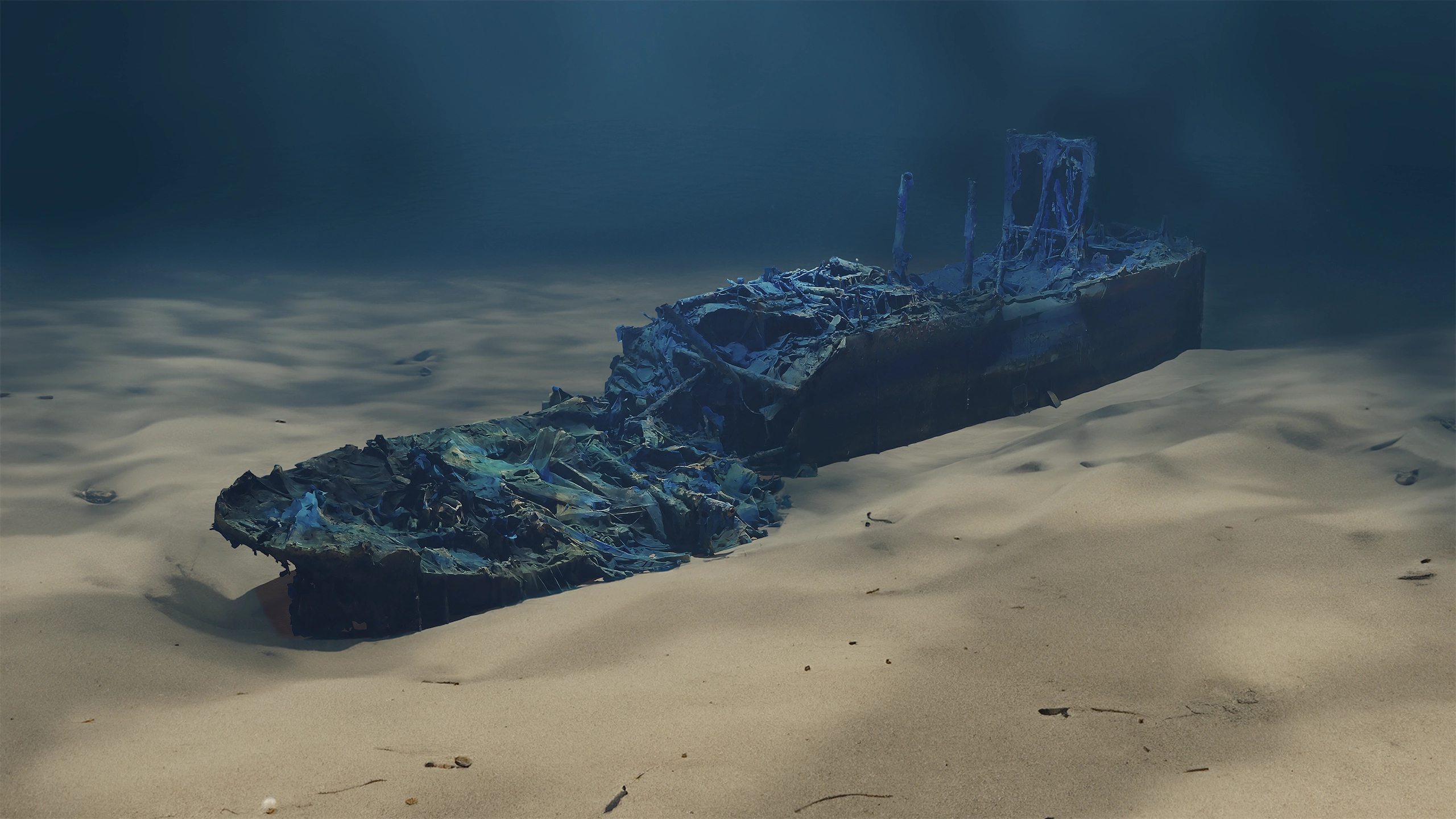
Steamship Caffaro
The History
It was a steamship of 6479 gross tons owned by Lloyd Triestino, requisitioned by the Royal Navy on July 4, 1940, for wartime needs and destined for routes to Libya.
At one o’clock in the morning on September 10, 1941, it departed from the port of Naples with a cargo of 2500 tons including vehicles, ammunition, food rations, and materials, along with 170 German soldiers, 10 Italian Navy soldiers, 7 Italian Army soldiers, and 44 civilian crew members, heading to Tripoli in a convoy.
The convoy it belonged to consisted of six ships, the steamers TEMBIEN, NIRVO, BAINSIZZA, NICOLO’ ODERO, CAFFARO, and the motor ship GIULIA, escorted by the destroyers ORIANI and FULMINE and the torpedo boats PROCIONE, ORSA, and PEGASO, to which the torpedo boat CIRCE would join during the navigation.
At 3:20 in the morning on September 12th, the convoy came under attack by a formation of 3 Swordfish torpedo bombers from the 830th Squadron of Malta, launching a torpedo at the Caffaro which managed to evade it with maneuvering. The attackers were driven off by the anti-aircraft fire from the ships.
At 14:05, the convoy was again under attack by 8 Blenheim bombers from the 105th Squadron of Malta: three of the attacking aircraft were shot down by the anti-aircraft fire, but two other planes managed to hit the CAFFARO aft with incendiary and high-explosive bombs.
An uncontrollable fire broke out on board the CAFFARO, and the ship, engulfed in explosions, was abandoned. At 15:43, the aft cargo hold of the Caffaro exploded with unprecedented violence, projecting materials to over a thousand meters in height. The steamship, broken in two, sank at 16:10. The attack cost the lives of two German soldiers, two Italian crew members, and six British aviators.
The Model
The three-dimensional model of the wreck is the result of 25,585 photographs taken in the summer of 2023. Their creation required over 8 hours of bottom time on the wreck, while their processing took over a week of computing time.
Photos: M. Arena, S. Gualtieri, P. Labò, A. Ferrandi, C. De Seta
Processing: S. Gualtieri, K. Beemster Leverenz, N. Arena
The Wreck
The wreck of the CAFFARO lies at a depth of 64 meters, broken into two sections that are only a few meters apart.
The bow section includes the central superstructure, up to the entire engine room, and is broken immediately after the superstructure, at the height of hold n°3, which exploded causing the ship to sink, and includes the semi-erect right cargo crane of the pair serving hold n°3, while the left one is bent and collapsed.
The hull of this part of the wreck remains upright and perpendicular to the seabed and has two large tears of about 6×3 meters on both the left and right sides, at the same height, about halfway along the length of the section, below what was the ship’s waterline: in both tears, panels of the hull on the bottom are partially detached.
The two large anchors are in place, in the hawseholes, partly covered by nets, and a third anchor is on the foredeck. The deck of the ship is devastated, cluttered with debris of all kinds, and covered in many parts by lost filaments and nets.
The two masts of the cranes serving hold n°1 are collapsed on the deck; the characteristic central crane, on the deck, remains upright, but without the mast that stood on it and is collapsed.
Hold n°1 is accessible from its hatch and contains a series of vehicles and artillery tractors. The hatch of hold n°2 does not seem accessible.
The hull of the stern section, which includes holds n°3 and n°4, collapsed following the explosion and impact with the seabed and is slightly off-axis compared to the bow, tilted on its right side by about 10 degrees. The section is particularly devastated at the height of hold n°3, the hold that exploded causing the sinking of the ship, and shows various tears and panels of the hull fallen in several places. A large net covers the entire stern section of the wreck, and the hatch of hold n°4, adding further chaos. The propeller is in place.

Explosives and Hydrocarbons
The CAFFARO was carrying over 900 tons of explosives, some of which certainly generated the apocalyptic explosion that caused the ship to sink. However, it is very likely that explosive material is still present in the wreck.
Life on the Wreck
The wreck of the CAFFARO is rich in marine life of all kinds, from sponges and other encrusting organisms to large stationary and pelagic fish. On the wreck, you can encounter brown groupers, dusky groupers, combers, dentex, amberjacks, and salema.
The Photogrammetry
To see the complete photogrammetry with additional contents and info, visit shop and make a donation.






